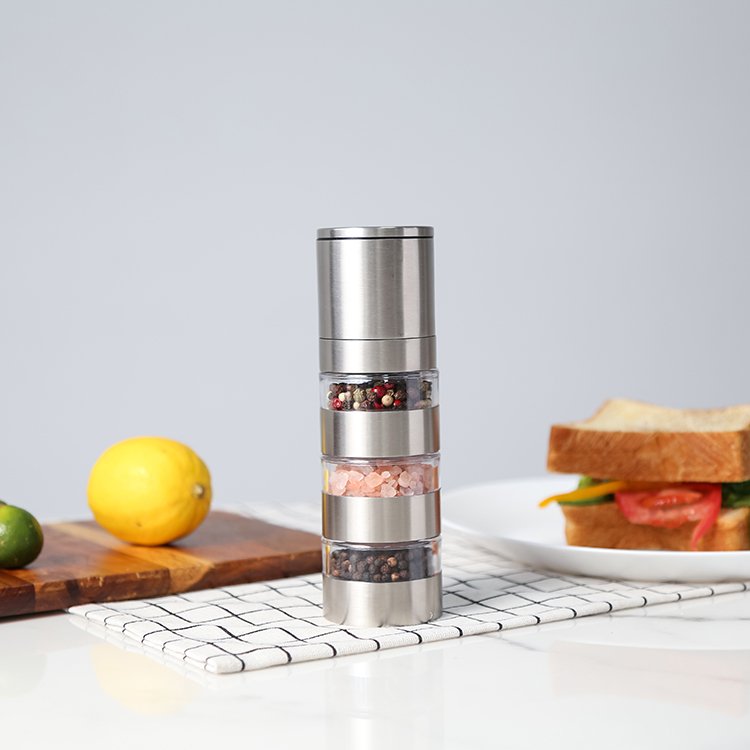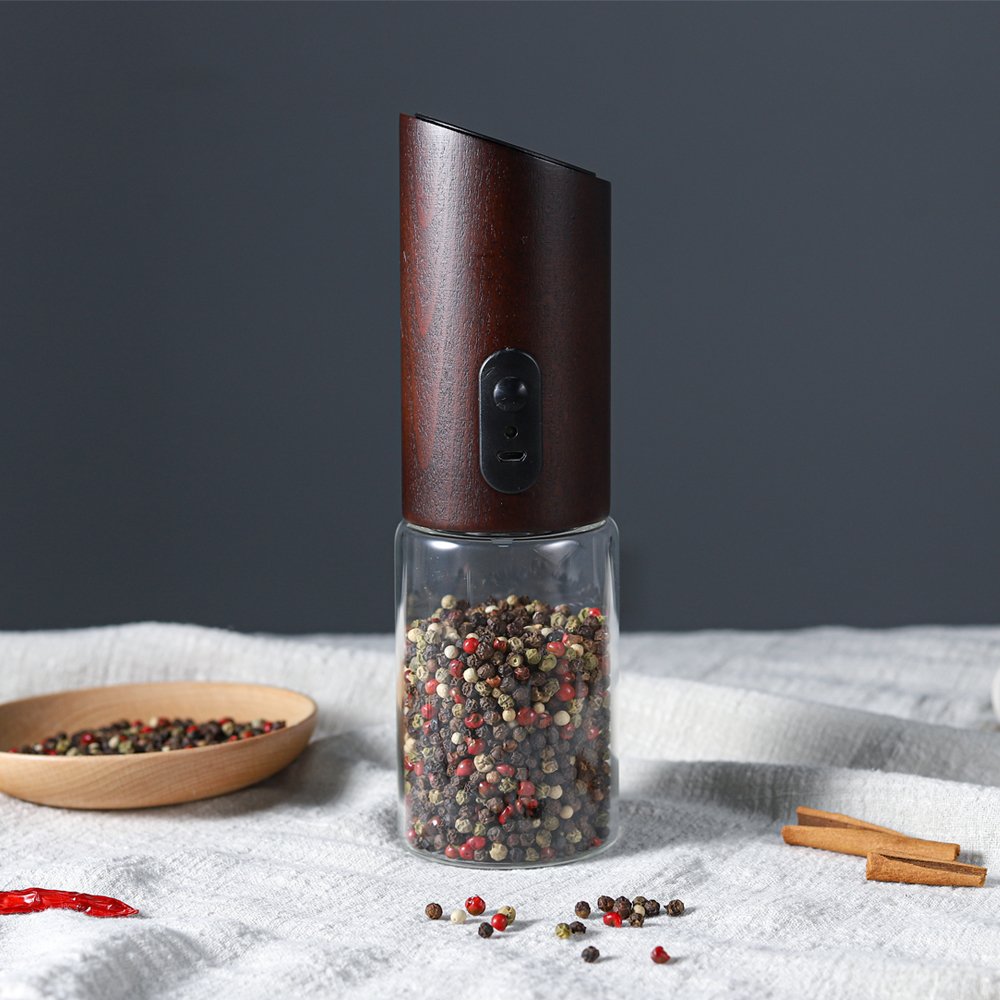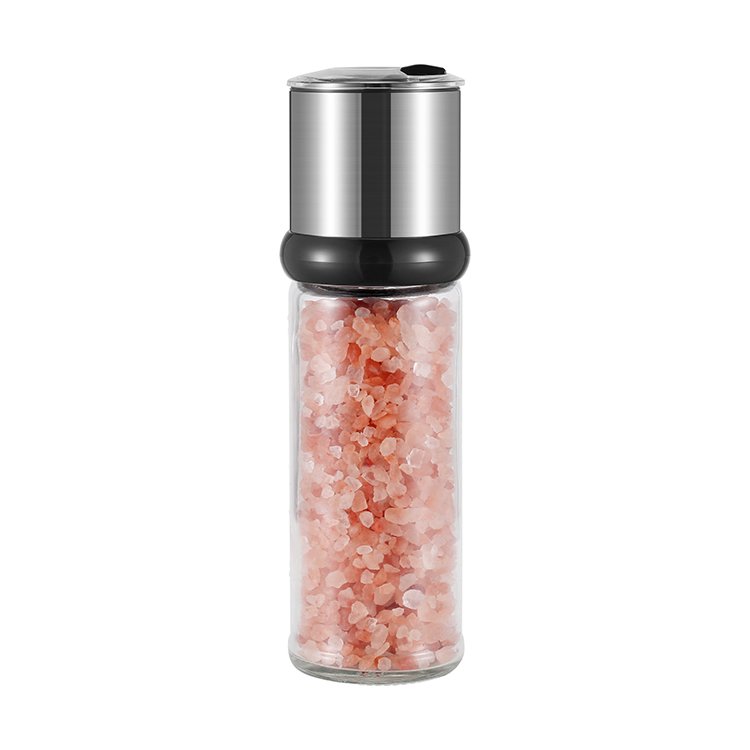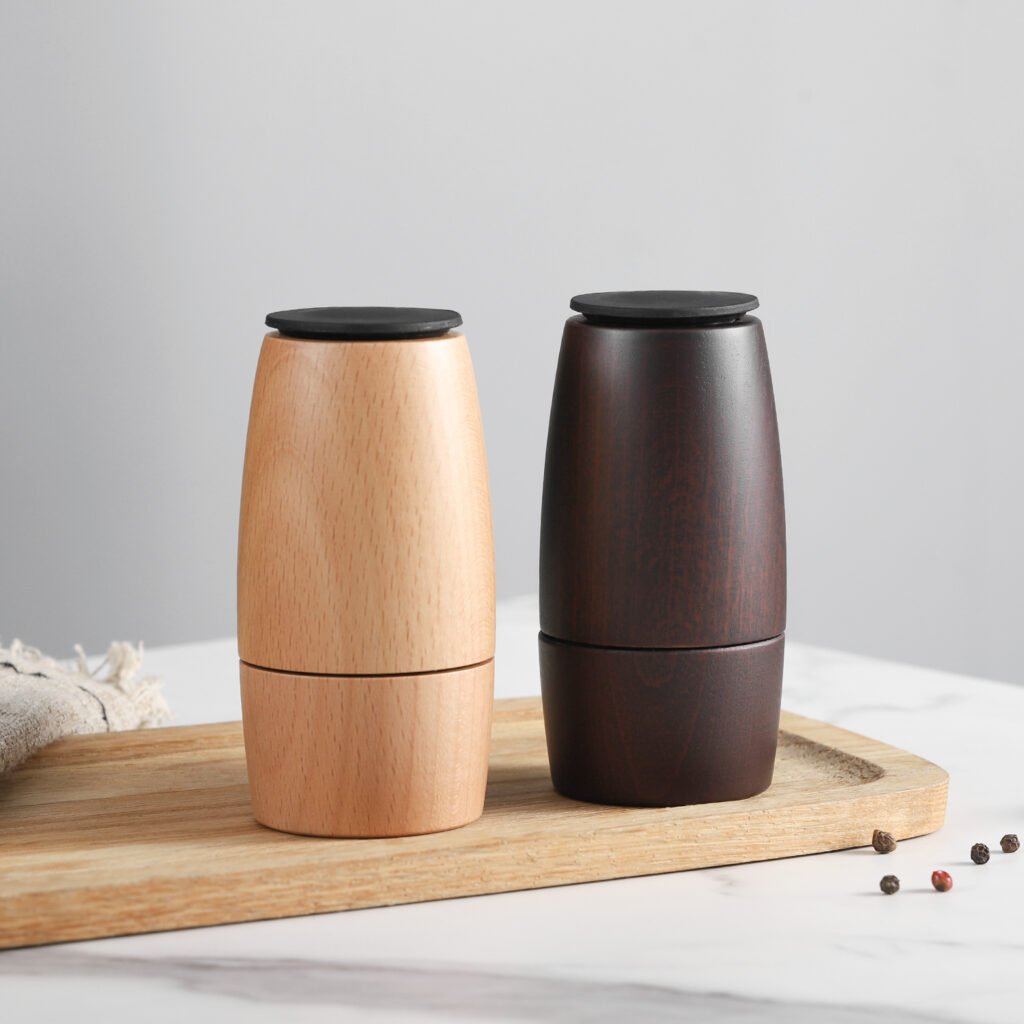
No, people should not wash wooden salt and pepper grinders with water. Water can cause wood to warp or crack and may damage the grinding mechanism. Many owners of a wooden salt pepper grinder set notice problems if the grinders get wet. Instead, people can clean the surface with a damp cloth and dry it right away. This method works for both traditional grinders and modern options like an electric salt and pepper grinder.
Wooden grinders should never be submerged in water.
Cleaning with a damp cloth and immediate drying helps prevent damage.
Proper care keeps wooden salt and pepper grinders looking beautiful and working well for years.
Key Takeaways
Never wash wooden salt and pepper grinders with water. Use a damp cloth instead to avoid warping or cracking.
Regularly clean your grinders every 2-3 months to prevent buildup and maintain their appearance.
Oil the wood every few months to keep it smooth and prevent drying or cracking.
Store grinders in a cool, dry place away from heat and moisture to protect the wood.
Always use dry spices in wooden grinders to avoid clogs and damage to the grinding mechanism.
Why water is harmful for wooden salt and pepper grinders
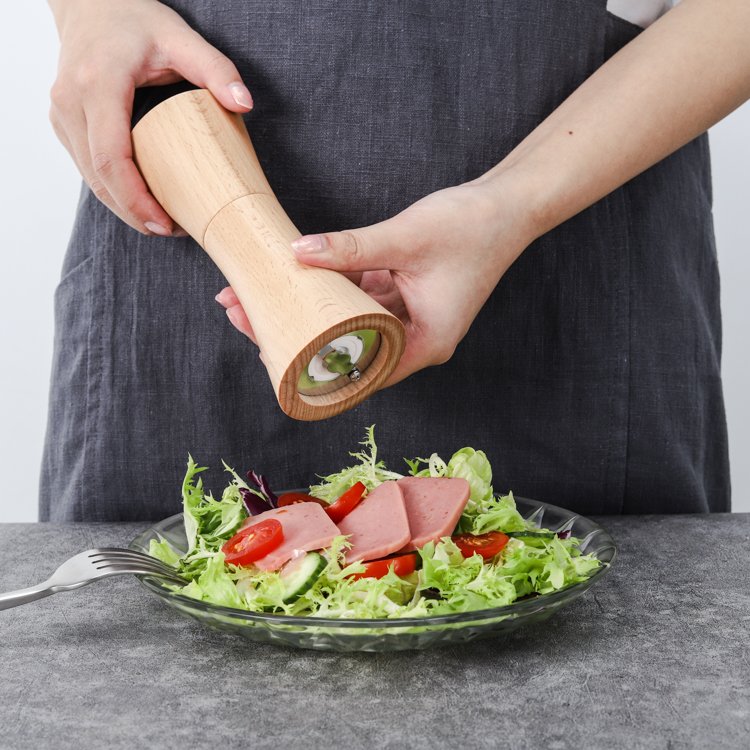
Risks of water exposure to wood
Wood soaks up water like a sponge. It pulls water from the air around it. When wood gets wet, its fibers get bigger and change shape. As wood dries, it shrinks and might crack. This can mess up how wooden salt and pepper grinders look and work. The table below shows why water causes these problems:
Evidence Description | Key Points |
|---|---|
Hygroscopic Nature of Wood | Wood pulls in water and changes shape when it dries. |
Drying Shrinkage | Wood shrinks as it loses water, which can cause cracks. |
Interaction with Wood Components | Water sticks to parts of wood and makes it swell. |
Mechanical Properties | Water changes how strong and shaped wood is. |
Even a little water can start this damage. Owners should keep their grinders dry to protect the wood.
Impact on grinding mechanisms
Water does not just hurt the wood. It can get inside and reach the grinding parts. Many grinders use metal or ceramic pieces to crush salt and pepper. If water gets in, metal can rust and ceramic can clog. The grinder may not work right. In electric grinders like the ChefsHere Gravity Electric Salt and Pepper Grinder, water can ruin the battery or motor. So, it is important to keep both the outside and inside dry. Clean the grinder with safe methods.
Differences from metal or plastic grinders
Not all grinders react to water the same way. Here are some main differences:
Wooden grinders can bend, crack, or grow mold if they get wet.
Plastic grinders can crack in very hot or cold places and may break if not made well.
Metal grinders do not soak up water and do not rust easily. They are easy to clean and good for kitchens with lots of moisture.
Wooden salt and pepper grinders need more care because water can hurt them more than metal or plastic ones.
Signs of water damage in grinders
People can notice water damage in a few ways. Some common signs are:
Wood that bends or cracks
Grinding parts that feel stuck or rough
Mold growing, even if the outside feels dry
Changes in how the grinder looks or works
Tip: If you see any of these signs, stop using water to clean your grinder. Use dry cleaning methods instead.
Moisture is the biggest problem for wooden seasoning tools. Even grinders made with special wood need careful use. The ChefsHere Gravity Electric Salt and Pepper Grinder uses strong wood, but owners should never wash it with water. Clean it with a dry or barely damp cloth and dry it fast. This helps the grinder stay nice and work well for a long time.
Cleaning the exterior of wooden salt and pepper grinders
Supplies for safe exterior cleaning
Choosing the right supplies helps protect the wood and keeps the grinder looking new. People should gather these items before cleaning your salt and pepper grinder:
Soft, damp cloth for gentle wiping
Drop of mild dish soap or a natural, all-purpose cleaner for stuck-on residue
Microfiber cloth for buffing and polishing
Avoid harsh chemicals and rough sponges. These can scratch or damage the wood.
Wiping and dusting techniques
Regular dusting keeps the grinder free from debris. For best results, mix equal parts vinegar and water. Dip a soft cloth in the solution and gently wipe the wooden surface. This method removes dust without soaking the wood. After wiping, dry the grinder with a clean towel. Natural oils like olive oil or mineral oil can condition the wood and protect it from drying out.
Removing grease and fingerprints
Grease and fingerprints can make a grinder look dull. Sprinkle corn starch over any fingerprints to absorb oils. Wipe away the corn starch and buff the area with a microfiber cloth. This technique leaves the wood clean and shiny. For extra care, create a homemade polish by mixing one cup of mineral oil with a few drops of essential oil. This polish refreshes the wood and adds a pleasant scent.
Polishing and refreshing wood finish
Polishing helps maintain the wood’s natural beauty. After cleaning your salt and pepper grinder, apply a small amount of mineral oil to a soft cloth. Rub the oil into the wood in the direction of the grain. Let it sit for a few minutes, then buff with a dry cloth. This step keeps the finish smooth and prevents the wood from drying out.
How often to clean the exterior
People should clean a salt grinder or clean a pepper mill every 2-3 months. Regular cleaning your salt and pepper grinder prevents buildup and keeps the exterior looking its best. If the grinder gets heavy use, increase the frequency. Always avoid using water on the grinding mechanism to prevent rust or clogs.
Cleaning your salt and pepper grinder interior safely
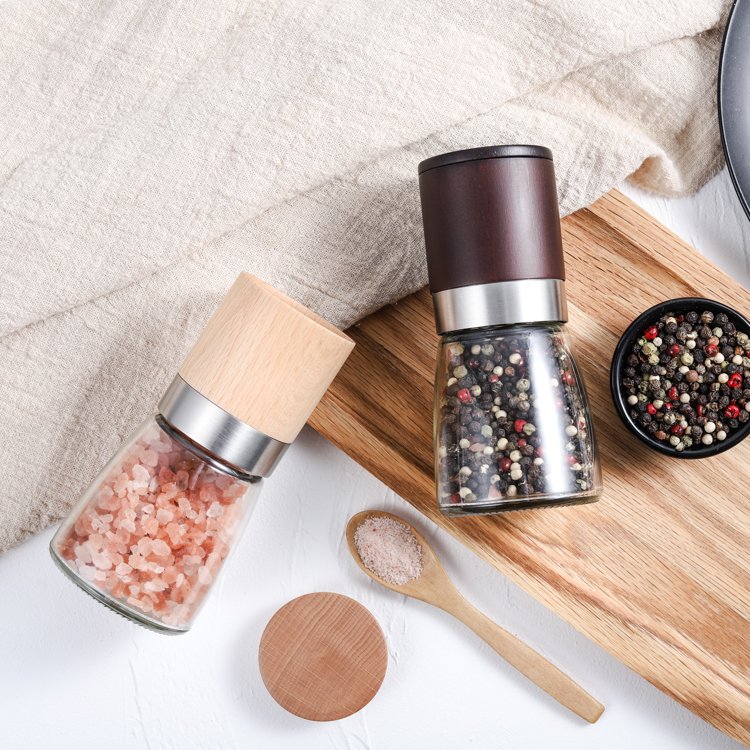
Emptying salt and pepper properly
Learning how to clean a wooden pepper mill starts with emptying it the right way. People should follow these steps to avoid damage:
Remove the top or bottom cap, depending on the grinder’s design.
Pour out any leftover salt or pepper into a bowl.
Hold the grinder upside down and gently tap it to loosen stuck pieces.
Use compressed air to blow out any remaining grains.
Insert a thin bottle brush to sweep out the inside.
These steps help keep the grinder dry and free from mold. Never soak the grinder in water.
Brushing out residue and clogs
Cleaning your salt and pepper grinder means removing all the small bits that get stuck inside. A small brush, like a clean toothbrush, works well for this job. Brush around the inside walls and the grinding mechanism. This helps remove old spice dust and keeps the grinder working smoothly. For cleaning old wooden salt and pepper mills, brushing is gentle and safe for the wood.
Tip: Use a dry brush only. Water can harm the wood and cause clogs.
Cleaning the grinding mechanism
To clean a salt grinder or clean a pepper mill, focus on the grinding mechanism. Many grinders, including the ChefsHere Gravity Electric Salt and Pepper Grinder, use ceramic or metal parts. Some models have removable mechanisms. If the part is not wood, people can wash it with mild soapy water, then dry it fully before putting it back. For non-removable parts, use a dry brush or compressed air. Avoid water or moisture, as it can damage the wood finish and affect performance.
Keep grinders away from heat, moisture, and sunlight.
Always dry parts completely before reassembling.
Dealing with stubborn buildup
Sometimes, salt or pepper dust forms a hard layer inside the grinder. To clean this, use a toothpick or a wooden skewer to gently scrape away the buildup. A small brush can help sweep out the loosened bits. If the buildup remains, repeat the brushing and tapping steps. Cleaning your salt and pepper grinder regularly prevents stubborn clogs and keeps the grinder working well.
What to avoid when cleaning wooden salt and pepper grinders
Soaking or submerging in water
Soaking wooden salt and pepper grinders in water can cause serious damage. Wood absorbs water quickly. When this happens, the wood may swell, crack, or even split. Metal parts inside the grinder can rust if they get wet. Many people make the mistake of submerging their grinders to remove stuck spices. This method often leads to ruined grinders. Instead, people should use a damp cloth or a small brush to clean the outside and inside. Always dry the grinder right away to keep it in good shape.
Note: Never leave a wooden grinder in a sink or dishwasher. Even a short soak can harm the wood and the grinding mechanism.
Using dishwashers or steam cleaners
Dishwashers and steam cleaners use high heat and lots of moisture. These cleaning methods can warp or crack wood. The strong water jets may also force water into small spaces, making it hard for the grinder to dry fully. This can lead to mold or rust. Electric grinders, like the ChefsHere Gravity Electric Salt and Pepper Grinder, have batteries and motors that water can damage. Always avoid putting wooden grinders in dishwashers or using steam to clean them.
Harsh chemicals and abrasives
Harsh chemicals and abrasive cleaners can ruin the finish on wooden grinders. They may also leave behind strong smells or tastes that affect the flavor of spices. People should avoid bleach, strong detergents, and rough scrubbing pads. Instead, use mild dish soap or a natural cleaning solution for safe results.
Common mistakes to avoid include:
Using harsh cleaning agents like bleach or abrasive cleaners
Submerging non-waterproof parts in water
Skipping proper drying after cleaning
A gentle approach helps keep wooden salt and pepper grinders looking and working their best. Always choose safe supplies and methods when you clean these kitchen tools.
Maintenance tips for wooden salt and pepper grinders
Proper storage to prevent moisture
Storing wooden salt and pepper grinders the right way helps stop moisture damage. Always keep grinders in a cool and dry spot. Do not put them near stoves, sinks, or windows. Heat and humidity can hurt the wood. Good airflow keeps grinders dry. Airtight containers block moisture and keep spices fresh. Clean and dry the grinder before storing it. This stops mold and keeps the grinder working well.
Store in a cool, dry area
Use airtight containers for extra protection
Keep away from water sources and heat
Ensure the grinder is clean and dry before storage
Oiling wood for longevity
Oiling wooden salt and pepper grinders helps them last longer. Safe oils like Waterlox or General Finishes Salad Bowl Finish protect the wood. These oils make the grinder look new. Do not use varnish or shellac. They can chip and are not safe for food. Put a little oil on a soft cloth and rub it on the wood. Let the oil soak in, then wipe off extra oil. This keeps the wood from drying out and helps clean old wooden salt and pepper shakers.
Tip: Oiling every few months keeps the wood smooth and prevents cracks.
Setting a cleaning schedule
Cleaning wooden salt and pepper shakers often is important. Clean them every two to three months. Grinding salt or pepper often helps stop clogs. Electric grinders like the ChefsHere Gravity Electric Salt and Pepper Grinder need the outside wiped and burrs brushed. Manual grinders may need to be taken apart for deep cleaning. Both types need regular care to stay fresh and ready to use.
Clean and inspect grinders every few months
Grind a small amount of salt or pepper regularly to prevent residue buildup
Follow regular maintenance tips for house salt and pepper grinders to extend their life
These steps help wooden salt and pepper grinders stay nice and work well for years.
Never wash wooden salt and pepper grinders with water. Dry cleaning and regular maintenance keep grinders in top shape. Follow these steps for best results:
Wipe with a damp cloth, never soak.
Oil the wood every few months.
Store in a cool, dry place.
Use only dry spices.
“A study by Kitchen Appliance Review in 2022 found that wooden pepper mills last an average of 30 percent longer than plastic and metal mills, typically more than 10 years, with proper care, such as regular cleaning and oiling.”
With the right care, every meal can feature perfectly seasoned dishes for years to come.
FAQ
Can you use wet salt or pepper in a wooden grinder?
Wet salt or pepper can clog the grinder and damage the wood. Always use dry, whole peppercorns or dry salt crystals. This keeps the grinder working well and prevents moisture from harming the wood.
How do you remove odors from a wooden grinder?
Place a few uncooked rice grains inside the grinder. Grind the rice until it turns to powder. The rice absorbs odors and leftover spice dust. Wipe the interior with a dry cloth after cleaning.
What should you do if the grinder gets wet by accident?
Dry the grinder right away with a towel. Let it air dry in a cool, dry place. Do not use heat or sunlight to speed up drying. Check for signs of damage before using it again.
Can you use the ChefsHere Gravity Electric Salt and Pepper Grinder for other spices?
The ChefsHere Gravity Electric Salt and Pepper Grinder works best with dry salt crystals and whole peppercorns. Some users also grind dry spices like coriander or cumin seeds. Avoid sticky or oily spices to protect the mechanism.


